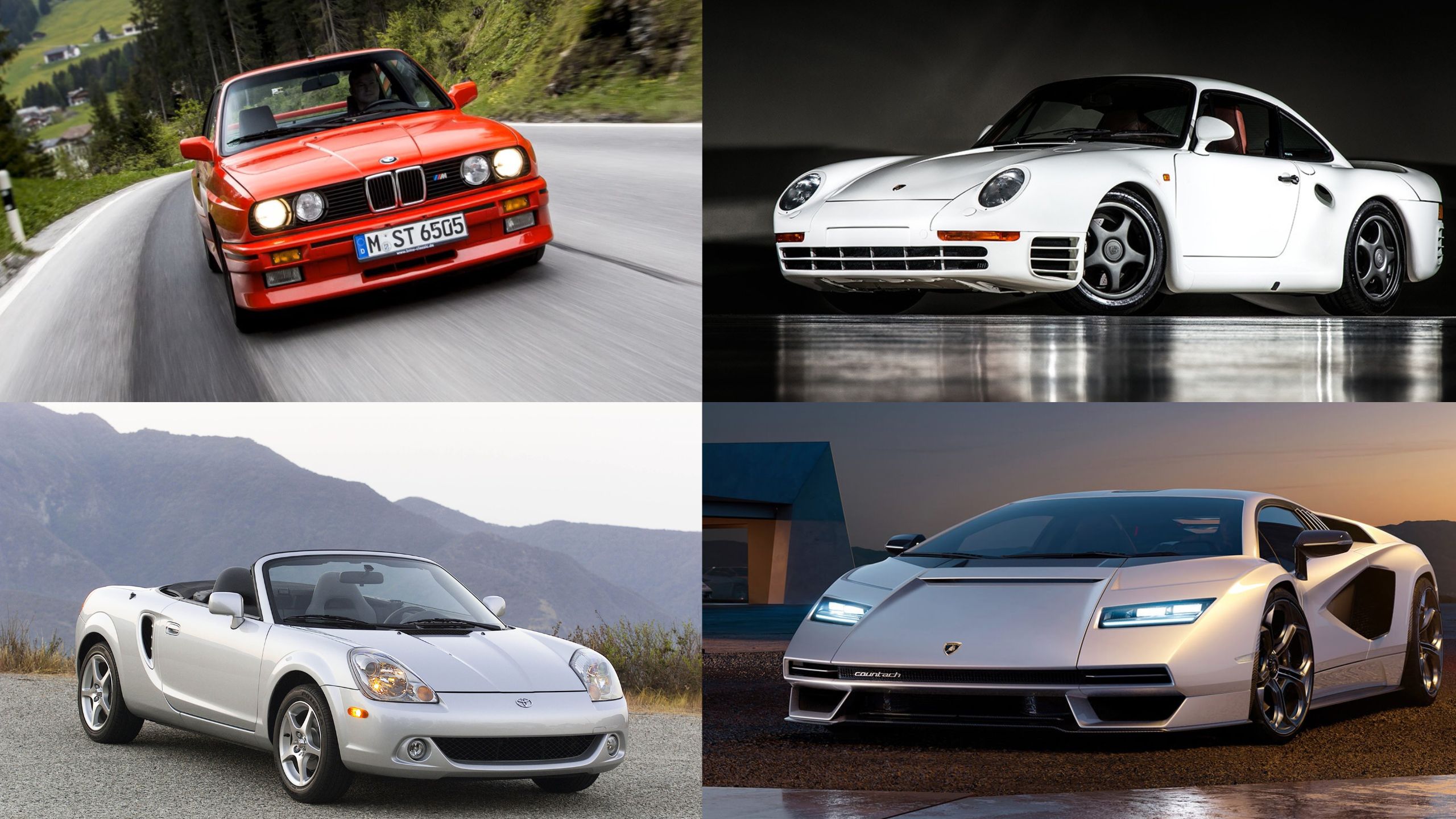The 1980s was a decade of remarkable innovation and cultural shifts in the automotive world. This era saw the rise of iconic cars that not only defined the period but also left an indelible mark on automotive history.
The 80s introduced groundbreaking designs, advanced technologies, and an emphasis on performance and luxury that fascinated car enthusiasts and the general public alike. From the sleek and powerful sports cars to the luxurious and technologically advanced sedans, these vehicles embodied the spirit of the decade.
In this guide, we’ll explore ten of the most iconic cars that defined the 1980s, highlighting their unique features, cultural significance, and lasting legacy.
1. DeLorean DMC-12
The DeLorean DMC-12 is perhaps one of the most iconic cars of the 1980s, largely due to its starring role in the “Back to the Future” film trilogy. Designed by Giorgetto Giugiaro, the DMC-12 features a stainless steel body and distinctive gull-wing doors, giving it a futuristic appearance that fascinated the public’s imagination. Despite its underwhelming performance, the DeLorean’s unique design and cinematic fame have cemented its place in automotive history.
Powered by a 2.85-liter V6 engine producing 130 horsepower, the DeLorean DMC-12 was not particularly fast or powerful by sports car standards.
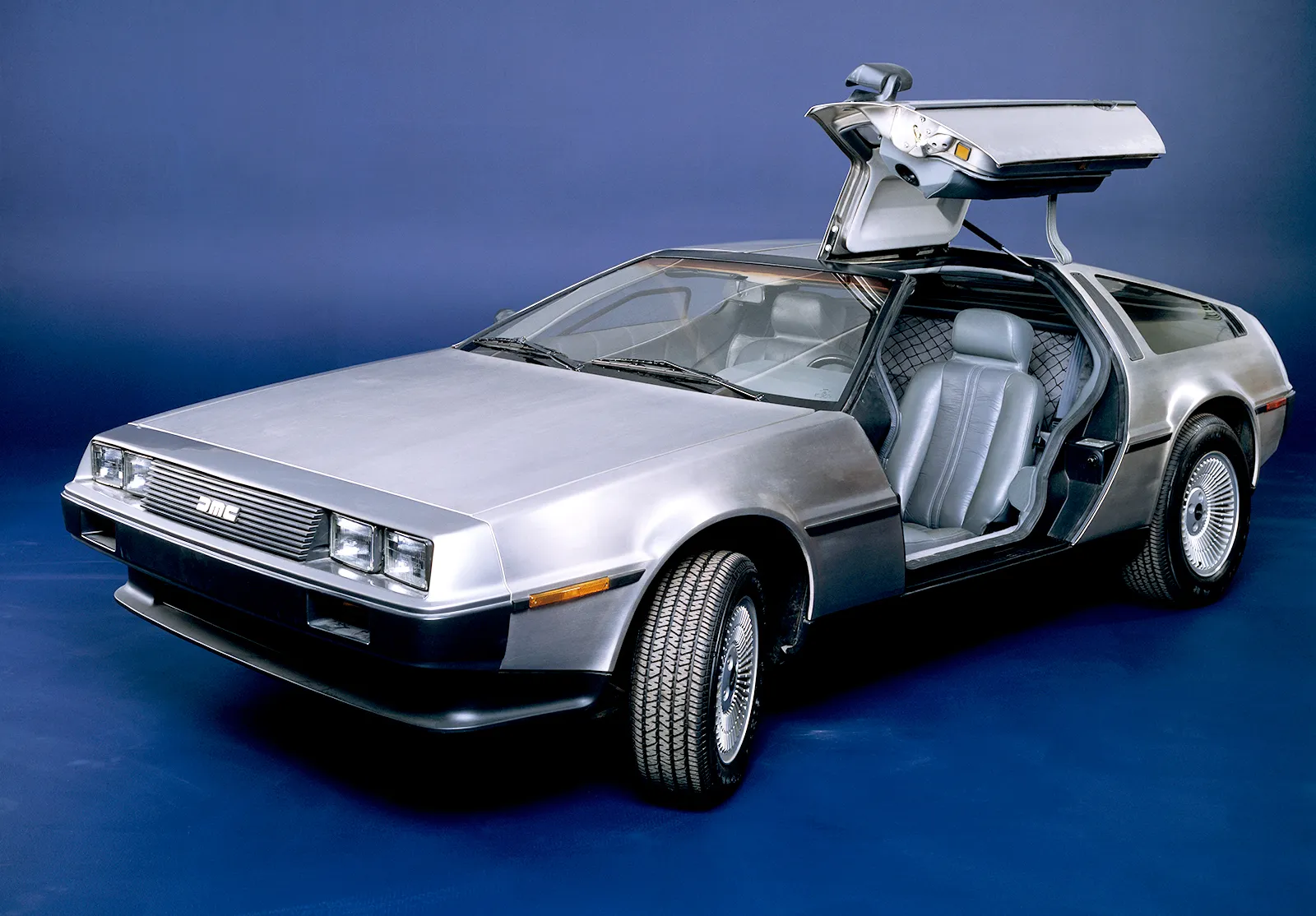
However, its bold styling and advanced features, such as a fully independent suspension and four wheel disc brakes, made it a standout in the automotive world. The DeLorean’s production run was short-lived, from 1981 to 1983, but its legacy endures.
The DeLorean DMC-12 remains a cultural icon, with enthusiasts and collectors seeking to preserve and restore these unique vehicles. Its association with time travel and the “Back to the Future” franchise has made it a symbol of 1980s pop culture, ensuring its place in the annals of automotive history.
2. Ferrari Testarossa
The Ferrari Testarossa is a quintessential 1980s supercar, known for its striking design and exhilarating performance. Revealed in 1984, the Testarossa’s distinctive side strakes, wide rear end, and bold red color made it an instant icon. Designed by Pininfarina, the Testarossa’s aggressive styling and aerodynamic profile captured the essence of 80s excess and luxury.
Under the hood, the Testarossa is powered by a 4.9-liter flat-12 engine producing 390 horsepower, capable of accelerating from 0 to 60 mph in just over 5 seconds. Its top speed of 180 mph made it one of the fastest cars of its time. The Testarossa’s mid-engine layout and advanced suspension system provided exceptional handling and performance, making it a favorite among driving enthusiasts.
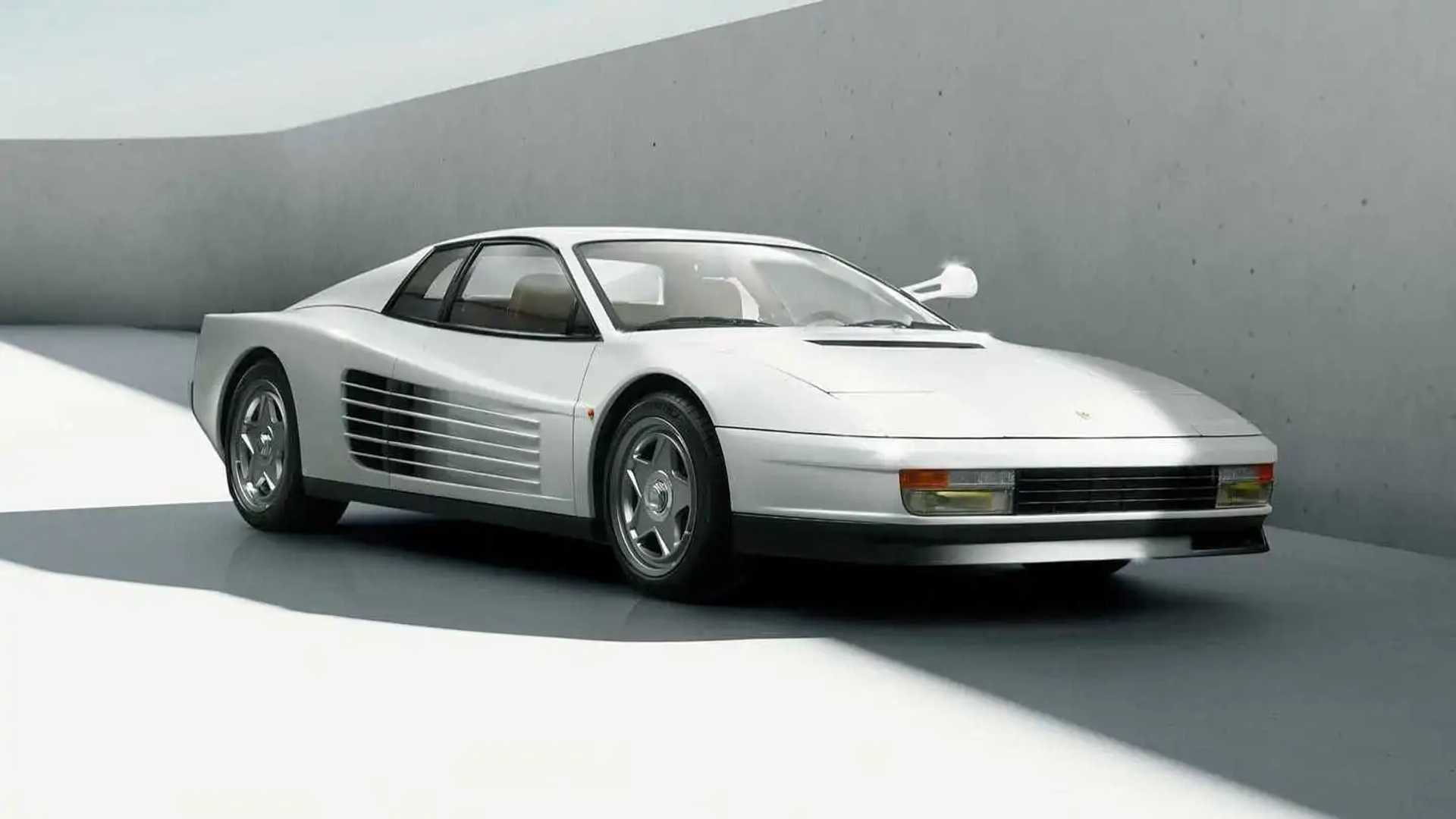
The Testarossa’s interior is equally impressive, with luxurious leather upholstery, advanced instrumentation, and a driver-focused cockpit. The car’s wide stance and low-slung profile give it a commanding presence on the road. The Testarossa was produced until 1996, with several updates and variants introduced over its production run.
Today, the Ferrari Testarossa is highly sought after by collectors and enthusiasts, who appreciate its combination of stunning design, powerful performance, and cultural significance. It remains a symbol of 1980s automotive excellence and a testament to Ferrari’s engineering prowess.
3. Porsche 959
The Porsche 959 is one of the most technologically advanced and innovative cars of the 1980s. Introduced in 1986, the 959 was designed as a Group B rally car but also served as a showcase for Porsche’s cutting-edge technology. Its all-wheel-drive system, twin-turbocharged engine, and advanced aerodynamics set new standards for performance and engineering.
Powered by a 2.85-liter twin-turbocharged flat-six engine producing 450 horsepower, the 959 could accelerate from 0 to 60 mph in just 3.6 seconds and reach a top speed of 197 mph. Its sophisticated all wheel drive system and adaptive suspension provided exceptional handling and stability, making it one of the most capable sports cars of its time.
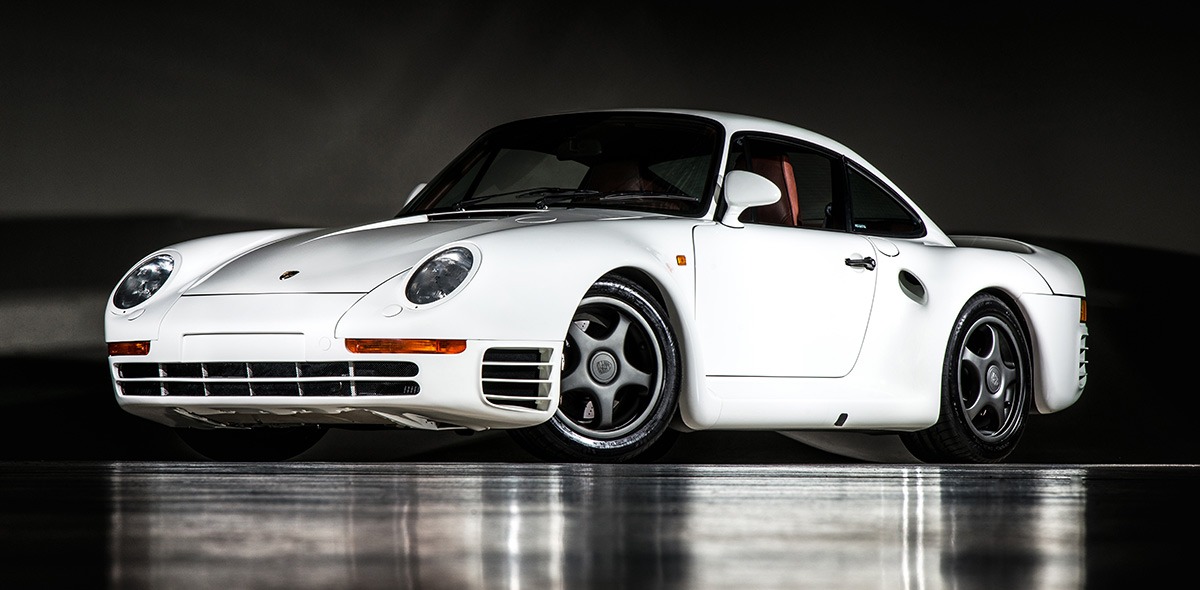
The 959’s aerodynamic design, with its smooth lines and integrated rear spoiler, was both functional and visually striking. The car’s interior was equally advanced, with a range of luxury features and advanced instrumentation. Despite its high price tag, the 959 was highly sought after by collectors and enthusiasts.
The Porsche 959’s legacy extends beyond its performance capabilities. It paved the way for future high-performance sports cars and demonstrated the potential of advanced technologies in automotive design. Today, the 959 remains a highly coveted collector’s item, admired for its innovation and engineering excellence.
4. BMW M3 (E30)
The BMW M3 (E30) is a legendary sports car that defined the 1980s and established the M3 as a benchmark for performance and driving dynamics. Introduced in 1986, the E30 M3 was developed as a homologation special for Group A touring car racing. Its aggressive styling, lightweight construction, and powerful engine made it an instant classic.
The E30 M3 is powered by a 2.3-liter inline-four engine producing 192 horsepower in its initial configuration, with later versions offering even more power. Its high-revving nature and responsive throttle made it a joy to drive on both the road and track. The car’s lightweight construction, with extensive use of aluminum and composite materials, contributed to its exceptional handling and performance.
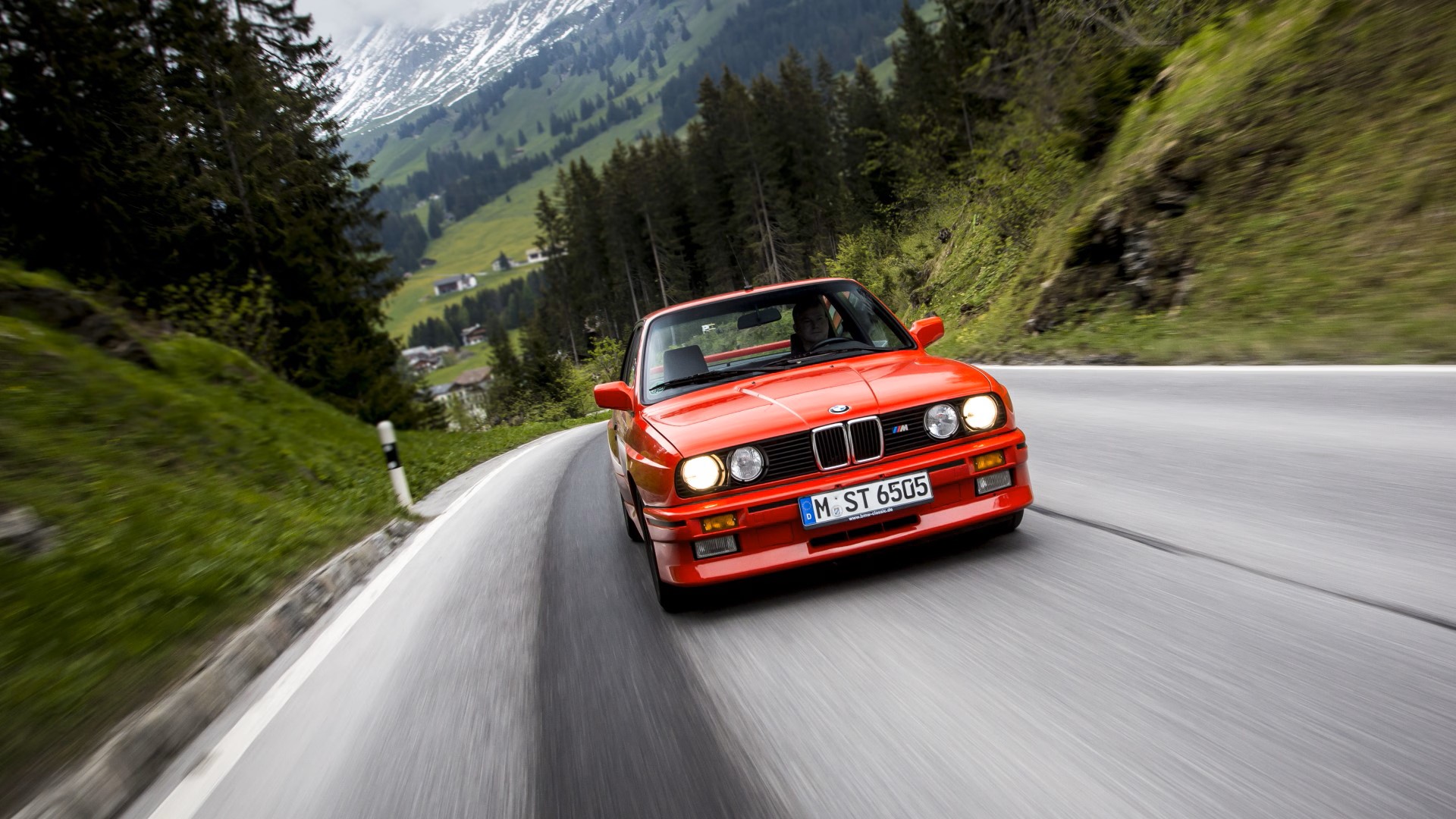
The E30 M3’s distinctive boxy shape flared wheel arches, and prominent rear spoiler gave it a purposeful and aggressive appearance. The car’s interior was driver-focused, with supportive sports seats and a minimalist design. The M3’s suspension and chassis tuning provided razor-sharp handling and excellent feedback, making it a favorite among driving enthusiasts.
The BMW M3 (E30) remains a highly sought-after classic car, admired for its blend of performance, handling, and iconic design. It set the standard for future M3 models and established BMW’s reputation for producing world-class sports cars.
5. Chevrolet Corvette C4
The Chevrolet Corvette C4 is a quintessential American sports car that defined the 1980s. Introduced in 1984, the C4 Corvette represented a significant leap forward in terms of design, technology, and performance compared to its predecessor. Its sleek, aerodynamic body and advanced features made it a standout in the sports car market.
The C4 Corvette is powered by a range of V8 engines, with early models featuring a 5.7-liter V8 producing 205 horsepower. Later versions, such as the ZR-1, offered significantly more power, with a 375-horsepower LT5 engine developed in collaboration with Lotus. The C4’s lightweight construction and advanced suspension system provided excellent handling and performance, making it a favorite among driving enthusiasts.
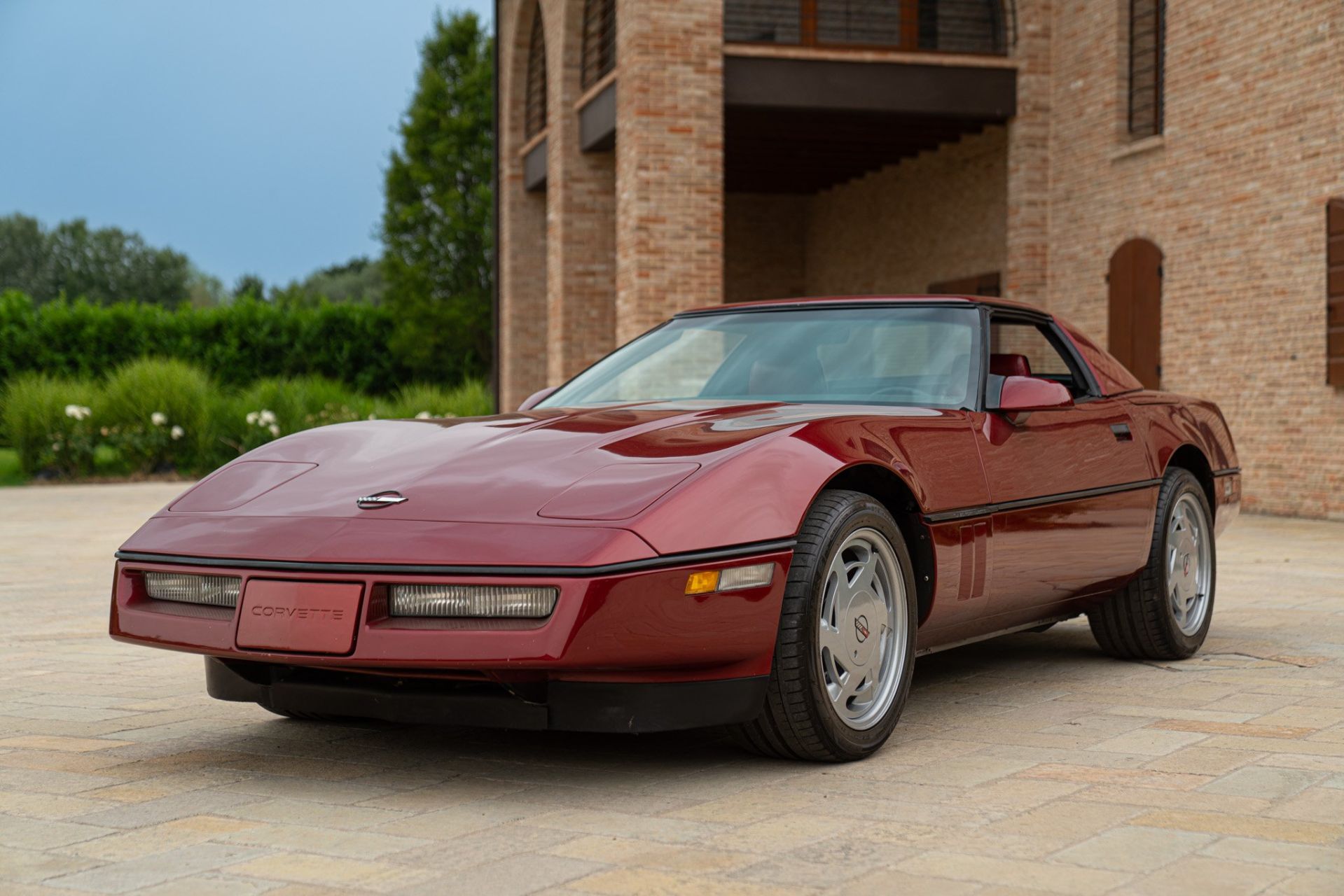
The Corvette C4’s interior was equally advanced, with digital instrumentation, a driver-focused cockpit, and a range of luxury features. The car’s removable roof panels add to its versatility, allowing for open-air driving. The C4’s distinctive design, with its sharp lines and pop-up headlights, gave it a futuristic appearance that was well-received by the public.
The Chevrolet Corvette C4 remains a popular choice among collectors and enthusiasts, who appreciate its combination of performance, design, and advanced technology. It played a significant role in revitalizing the Corvette brand and cementing its status as an American automotive icon.
6. Ford Mustang GT (Fox Body)
The Ford Mustang GT (Fox Body) is an iconic American muscle car that defined the 1980s. Introduced in 1979 and produced until 1993, the Fox Body Mustang represented a return to the Mustang’s roots as a lightweight, performance-oriented vehicle. Its aggressive styling, powerful engines, and affordable price made it a favorite among driving enthusiasts and young car buyers.
The Mustang GT is powered by a range of V8 engines, with the most notable being the 5.0-liter V8 producing 225 horsepower. This engine, coupled with a lightweight chassis, provided impressive acceleration and performance. The Fox Body’s rear-wheel-drive layout and well-tuned suspension made it a joy to drive on both the road and track.
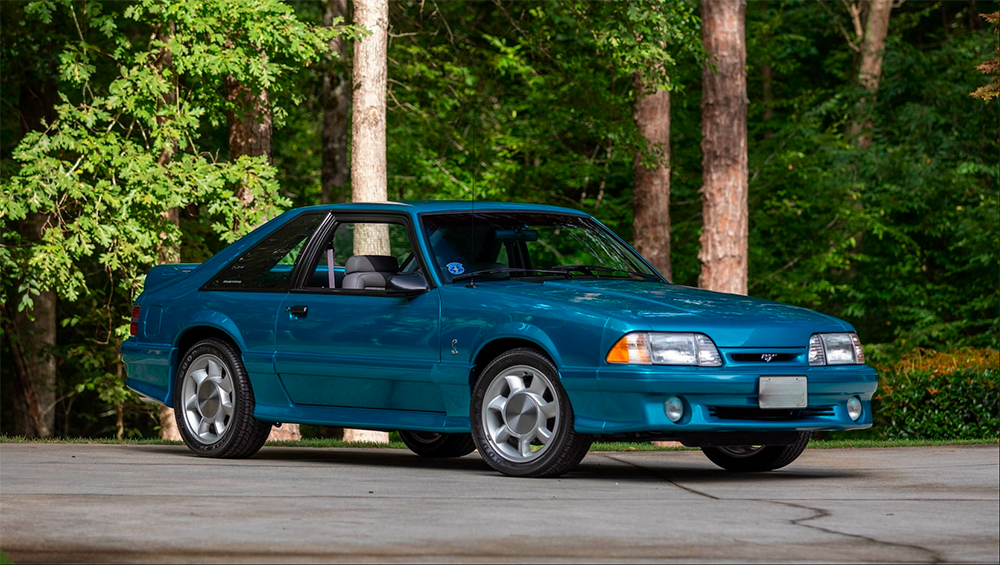
The Fox Body Mustang’s distinctive design, with its sharp lines, wide stance, and iconic grille, gave it a muscular and aggressive appearance. The car’s interior was functional and driver-focused, with supportive sports seats and a minimalist design. The Mustang GT’s performance and affordability made it a popular choice for modifications and aftermarket upgrades, further enhancing its appeal among enthusiasts.
The Ford Mustang GT (Fox Body) remains a beloved classic, admired for its blend of performance, style, and cultural significance. It played a crucial role in revitalizing the Mustang brand and establishing its reputation as an American automotive legend.
7. Audi Quattro
The Audi Quattro is a groundbreaking sports car that defined the 1980s and revolutionized rally racing. Introduced in 1980, the Quattro was the first production car to feature Audi’s innovative all-wheel-drive system, which provided exceptional traction and handling on both road and track. Its success in rally racing cemented its status as an automotive icon.
The Quattro is powered by a 2.1-liter turbocharged inline-five engine producing 200 horsepower, which was later increased in subsequent versions. The car’s all-wheel-drive system, combined with its powerful engine, provided impressive acceleration and performance, making it a formidable competitor in rally racing. The Quattro’s advanced suspension and chassis tuning further enhanced its handling and stability.
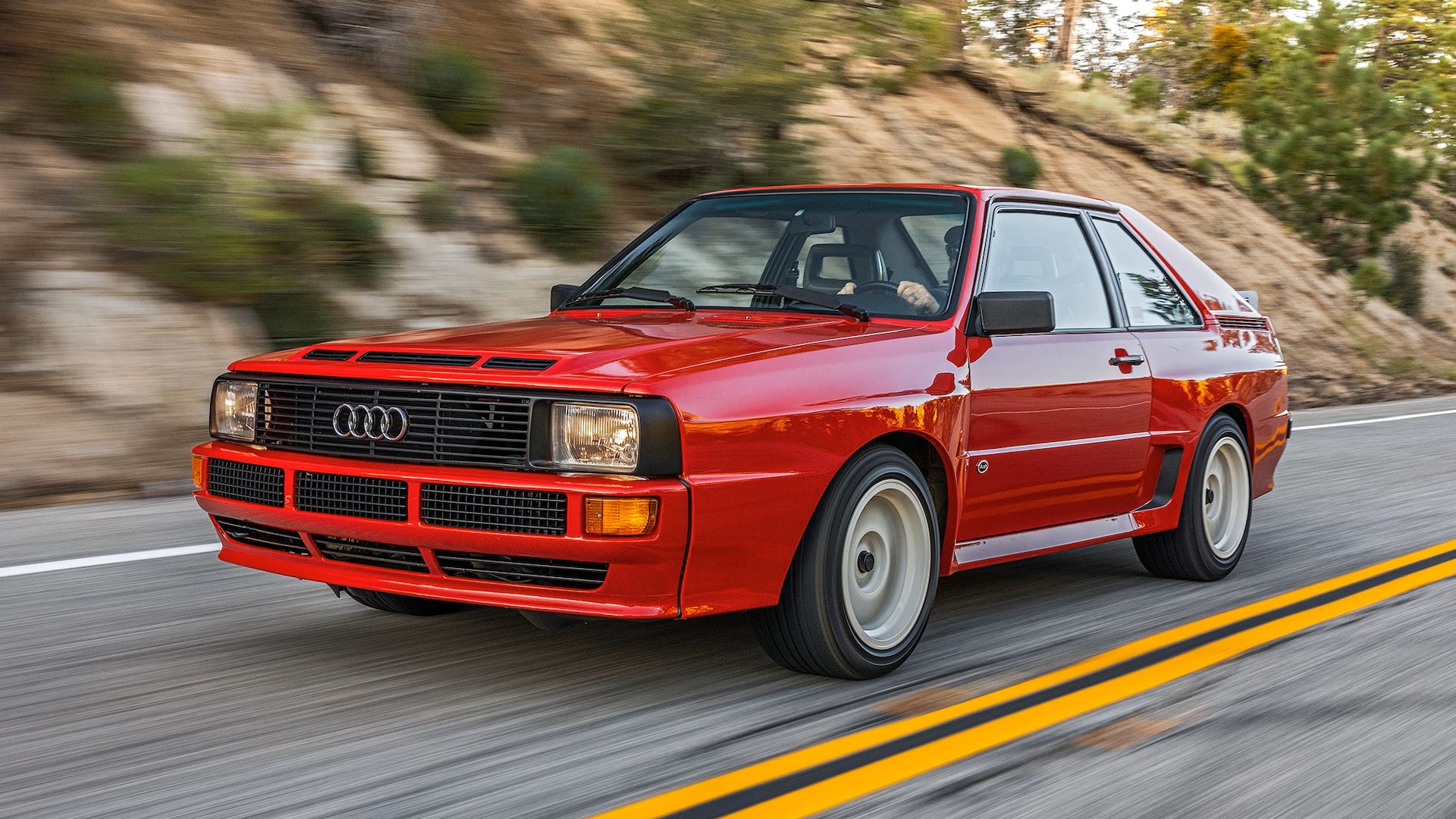
The Audi Quattro’s distinctive design, with its boxy shape, flared wheel arches, and bold grille, gave it a purposeful and aggressive appearance. The car’s interior was driver-focused, with supportive sports seats and a range of advanced features. The Quattro’s combination of performance, innovation, and distinctive design made it a standout in the 1980s automotive world.
The Quattro’s legacy extends beyond its rally success. It paved the way for the development of Audi’s Quattro all-wheel-drive technology, which has become a hallmark of the brand. The Audi Quattro remains a highly sought-after classic, admired for its engineering excellence and significant impact on automotive history.
8. Lamborghini Countach
The Lamborghini Countach is an iconic supercar that defined the 1980s with its bold design and exhilarating performance. Introduced in 1974 and produced until 1990, the Countach’s futuristic styling and scissor doors became synonymous with 1980s excess and luxury. Designed by Marcello Gandini at Bertone, the Countach’s sharp angles, wide stance, and aggressive lines made it an instant automotive legend.
The Countach is powered by a range of V12 engines, with the most powerful version being the 5.2-liter V12 producing 455 horsepower. This engine, combined with the car’s lightweight construction, allowed the Countach to accelerate from 0 to 60 mph in just over 5 seconds. The Countach’s mid-engine layout and advanced suspension system provided exceptional handling and performance, making it a favorite among driving enthusiasts.
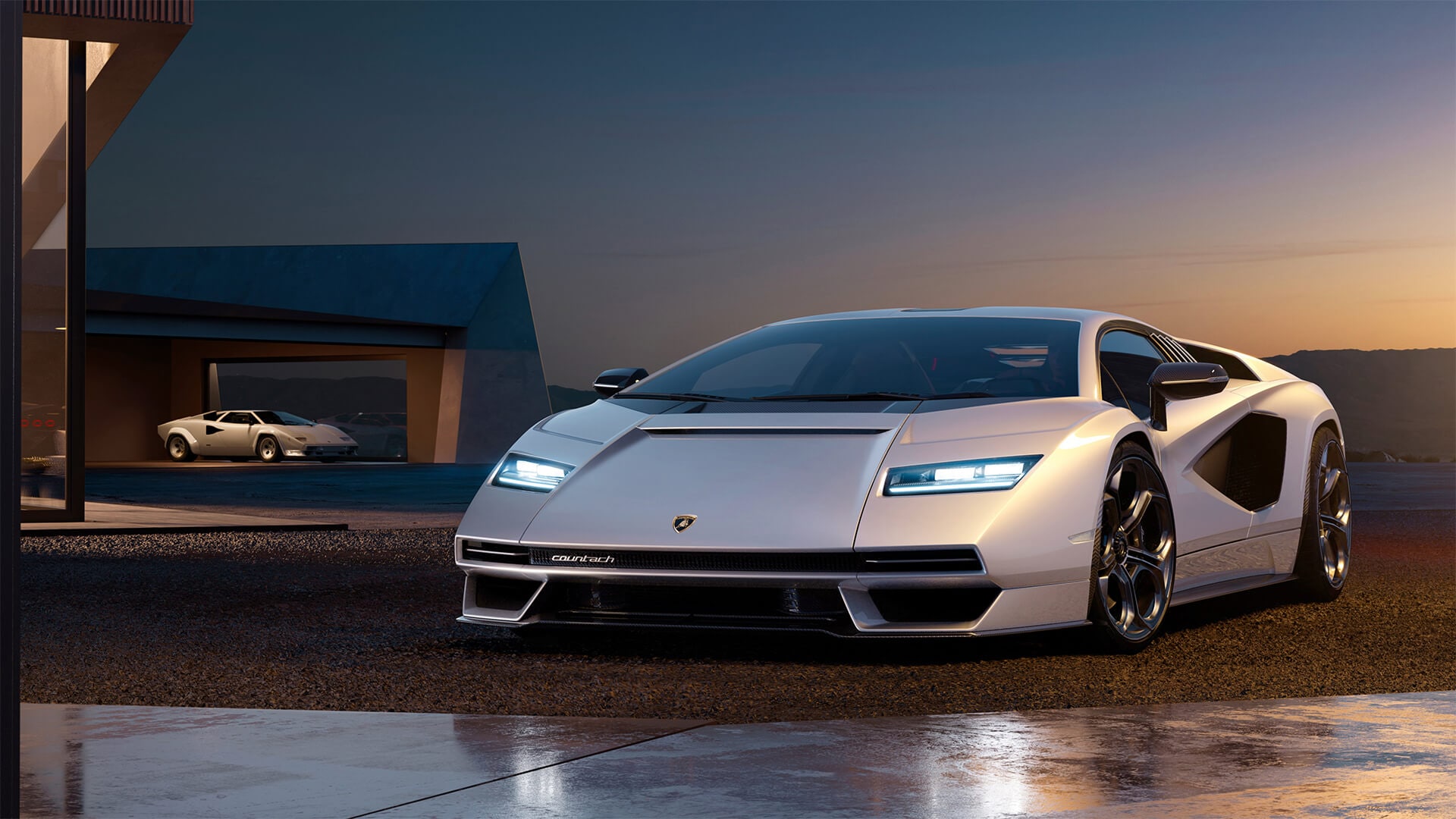
Inside, the Lamborghini Countach featured a driver-focused cockpit with luxurious materials and advanced instrumentation. The car’s low-slung profile and wide stance gave it a commanding presence on the road. The Countach’s unique design and impressive performance made it a symbol of 1980s automotive innovation and excess.
The Lamborghini Countach remains one of the most recognizable and celebrated supercars in automotive history. Its combination of futuristic design, powerful performance, and cultural significance has ensured its place as an icon of the 1980s and a testament to Lamborghini’s engineering prowess.
9. Toyota MR2
The Toyota MR2 is a mid-engine sports car that gained popularity in the 1980s for its agile handling and affordable price. Introduced in 1984, the MR2 was designed to offer the thrill of a mid-engine layout without the high cost typically associated with such vehicles. Its compact size, lightweight construction, and responsive handling made it a favorite among driving enthusiasts.
The first-generation MR2 is powered by a 1.6-liter inline-four engine producing 112 horsepower, which was later increased with the addition of a supercharged version producing 145 horsepower. The car’s mid-engine layout provided excellent balance and weight distribution, enhancing its handling and performance. The MR2’s lightweight construction and well-tuned suspension made it a joy to drive on twisty roads and tracks.
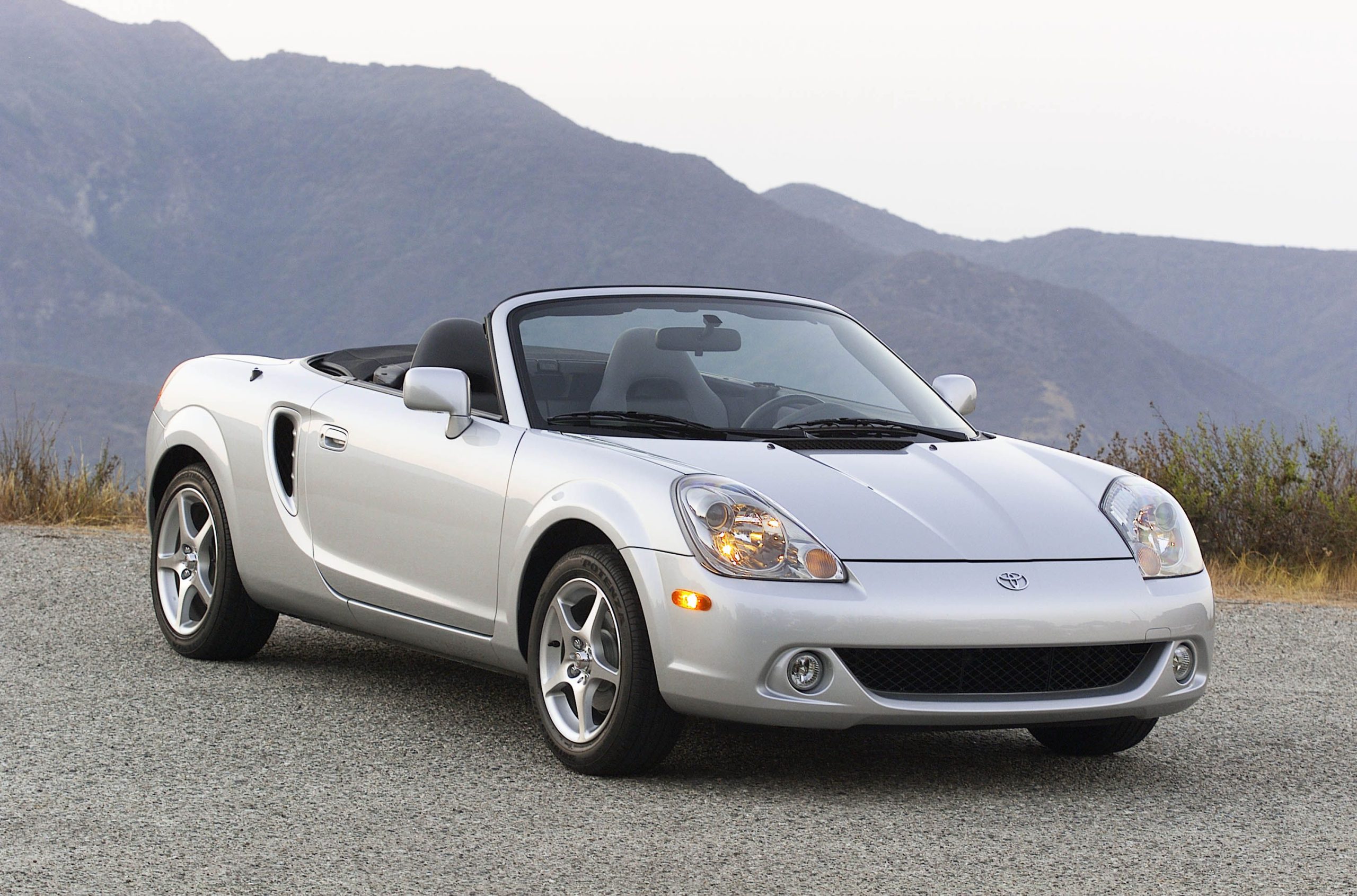
The Toyota MR2’s design, with its sharp lines and wedge shape, gave it a distinctive and sporty appearance. The car’s interior was driver-focused, with supportive seats and a functional layout. The MR2’s affordability and performance made it an accessible entry point of mid-engine sports cars.
The Toyota MR2’s legacy continues with subsequent generations, each building on the success and innovation of the original. The MR2 remains a beloved classic, admired for its combination of performance, affordability, and distinctive design.
10. Buick Grand National
The Buick Grand National is a legendary American muscle car that defined the 1980s with its powerful performance and menacing appearance. Introduced in 1982 and produced until 1987, the Grand National was based on the Buick Regal but featured a turbocharged V6 engine and a range of performance enhancements that set it apart from its competitors.
The Grand National is powered by a turbocharged 3.8-liter V6 engine producing 245 horsepower, which was later increased in the limited-production GNX version to 276 horsepower. The car’s turbocharged engine provided impressive acceleration and performance, allowing it to compete with some of the most powerful muscle cars of the era. The Grand National’s lightweight construction and rear-wheel-drive layout further enhanced its performance and handling.
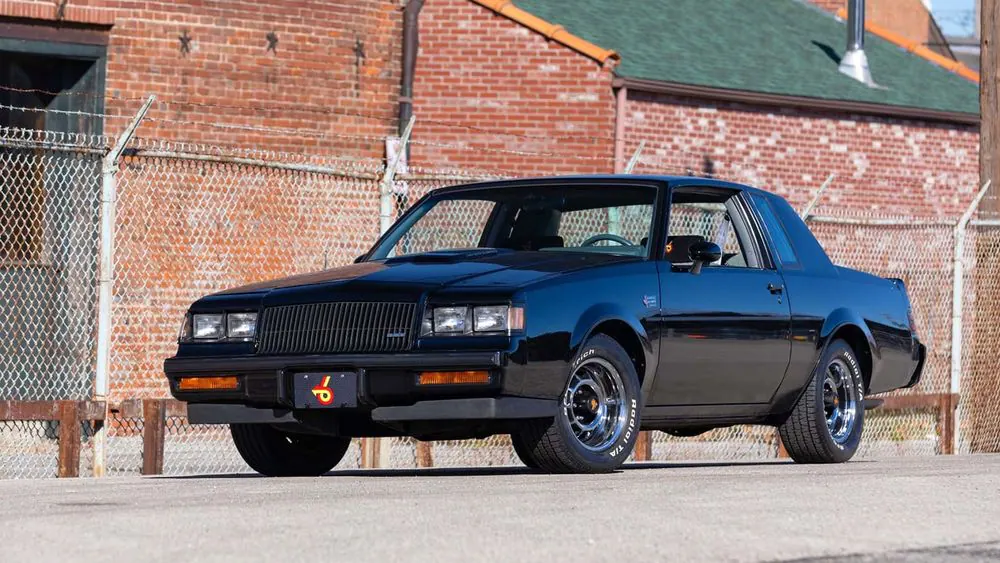
The Buick Grand National’s distinctive design, with its blacked-out exterior, aggressive stance, and understated styling, gave it a menacing and purposeful appearance. The car’s interior was functional and driver-focused, with supportive sport seats and a range of performance-oriented features. The Grand National’s combination of performance and style made it a favorite among muscle car enthusiasts.
The Buick Grand National remains a highly sought-after classic, admired for its powerful performance, distinctive design, and cultural significance. It played a crucial role in the resurgence of American muscle cars in the 1980s and remains a symbol of the era’s automotive innovation and excess.

